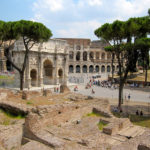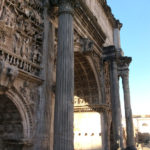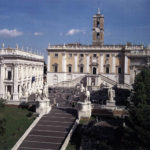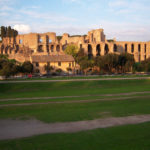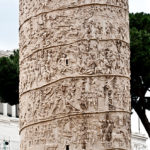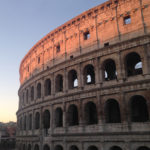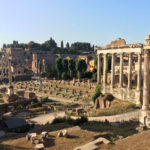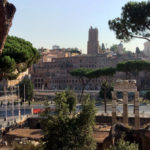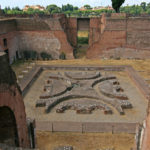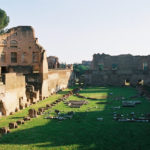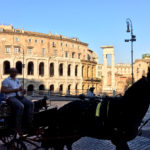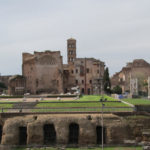On the land where, according to the legend, Rome is said to be founded, two brothers, raised by a she-wolf, contemplated birds flying in the sky: the one who saw the most would be entitled to name the city. Fate favored Romulus, who drew a furrow with a plough on the Palatine Hill: the “Roma Quadrata” (Square Rome) was born. It was 21 April 753 B.C.
Romulus was the first king of Rome. His father was Mars, his mother the vestal Rhea Silvia, daughter of Numitor, king of Alba Longa and descendant of Aeneas, the Greek hero son of Venus who escaped from the burning Troy. Between reality and myth Rome was born, destined to become “caput mundi” for over ten centuries.
First Romulus fortified the Palatine, where he was raised, and afterwards he hosted a great amount of people in the asylum, the ridge between the Campidoglio and the Arx, in order to populate the city that he founded. During the celebrations in honor of the god Conso, he organized the rape of the Sabine women to facilitate the integration of the Romans with the surrounding population, who reacted declaring war. Romulus forcefully defended the Campidoglio from the Sabine soldiers who entered the city with the help of the vestal Tarpea. The same women who were kidnapped mediated between the two sides hoping to stop the war. Peace was sealed with the marriage of Romulus and the noble Ersilia as well as the alliance among the two enemies. The Sabines moved to the Quirinal Hill and the Campidoglio became the acropolis of Rome, thanks to its exceptional location between the plain of the Roman Forum, the Tiber river, and the proximity to the ford of Tiber Island and it will remain for centuries the symbolic site of political power of the city until today.








